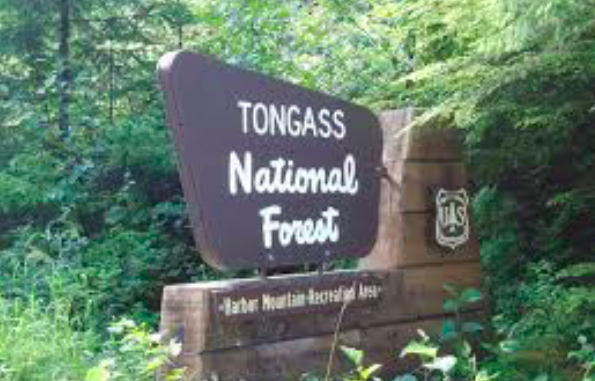FOREST SERVICE CAN’T STOP TRANSPORTATION PLAN
The State of Alaska has won in a lawsuit against the U.S. Forest Service, affecting Southeast Alaska roads across the Tongass National Forest.
The decision by U.S. District Court Judge Ralph Beistline allows the State of Alaska to implement the Southeast Transportation Plan by constructing roads on the 20 easements the State received under Congressman Don Young’s “Safe, Accountable, Flexible, Efficient Transportation Equity Act: A Legacy for Users (SAFETY-LU),” which was signed into law in 2005 by President George W. Bush.
The judge declared that the Roadless Rule is not applicable to infrastructure development located in the State’s “4407” easement corridors.
Judge Beistline’s order preserves the property rights held by the State of Alaska in easements created through a land exchange ratified by Congress.
“This decision is a great win for the State and for Southeast Alaska in particular,” said Attorney General Kevin Clarkson. “This allows the State to connect the communities of Southeast Alaska without unnecessary Forest Service restrictions such as the Roadless Rule.”
The court clarified that the Forest Service has no legal authority to withhold or deny the State’s request for an easement to accommodate a transportation or utility project under the Section 4407 easements, according to the Alaska Department of Law.
This dispute stemmed from a Forest Service decision in 2014 that changed its interpretation of Section 4407 and proceeded to withhold easements for road construction that was part of the Southeast Alaska Transportation Plan.
This led to significant delays, as the State Department of Transportation and Public Facilities was prevented from constructing and operating roads across federal lands. Most of Southeast Alaska is federal forest land and the State had been progressing on an ambitious plan to connect more communities.
Alaska’s congressional delegation passed a clarifying amendment to Section 4407 in 2015, intending to remove all obstacles being raised by the Forest Service and have the easements issued.
After the 2015 amendment, all pending easements were released by the Forest Service except the easement for the Shelter Cove Road project in Ketchikan. The State sued.
The State and federal governments’ easement exchange in 2005 was designed to preserve the State’s infrastructure development rights, if the Roadless Rule were to become applicable to the Tongass National Forest, by establishing easements for transportation and utility corridors to connect the communities of Southeast Alaska.
In exchange, the Forest Service received easements over state-owned tidelands for hundreds of federal-owned facilities—docks, floats, boat ramps, breakwaters, and log transfer facilities.
Judge Beistline’s final order on summary judgment giving the State full relief on its four requests for declaratory judgment can be found here:

Another win against federal overreach! Why do these government entities think they do not have to follow the law?
Thank you for the excellent reporting on this!
I grew up in the PNW. Much of my recreation occurred on logging roads. Once the renewable resource was monetized, the roads represented excellent recreational infrastructure. I love logging roads. Nothing better than logging roads.
One would think the industrial tourism industry would like some lumber mills for a little bit of authenticity, rather than sucking of to the anti-development industry that isn’t going to get on a cruise ship anyway. (I guess I do have that in common with the anti-development industry.)
This is very sad! The gentle giants of the Tongass will be on the chopping block displacing many animals habitats and all of us choking on more fumes. Judge didn’t uphold the Roadless Rule, which is supposed to prevent dubious “easements” through forest areas.
So the state wants to cut funding for the existing transportation system in Southeast, the Marine Highway, and replace it with a road system? How does that make sense?